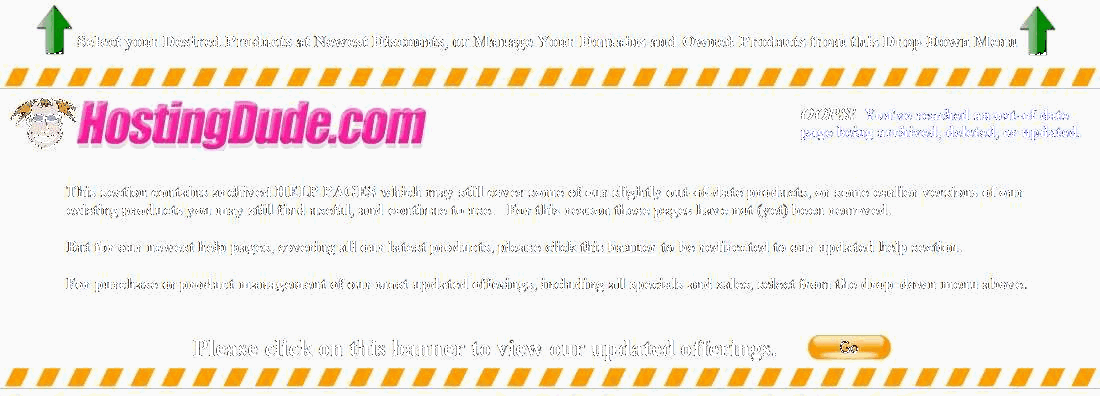Using Windows Hosting Form Mailers
Two form mailers are included in Windows shared hosting accounts: webformmailer.asp and gdform.php. To use a form mailer, create a Web form in HTML that links to one of our scripts and upload it to your hosting account.
NOTE: As of October 29th, 2008, gdform.asp is no longer offered on Windows shared hosting accounts. Forms using gdform.asp will continue to function provided the file is not deleted.
WARNING: Gdform.asp cannot be recovered if it is deleted.
The form mailers are not installed until you specify the email address you want to use with the form mailer in your account manager. For more information, see Specifying an Email Address for the ASP Form-Mailer.
webformmailer.asp
To Use webformmailer.asp
- Create a Web form, assigning unique names to your form fields.
- In the form tag, assign
_gdForm/webformmailer.aspto the action attribute and set the form method topost:
<form action="_gdForm/webformmailer.asp" method="post"> - In addition to the form fields you create, there are three hidden elements you can use.
form_format determines in what format the information is delivered. Its values are 'text', 'csv', 'html', 'xml', and 'default' (same as 'text').
form_order dictates in what order the fields are reported. Its values are 'default' (the same order as they appear on in the form), 'alpha' (alphabetized by field name) or a comma-separated, case-sensitive list of all or some field names.
form_delivery determines the frequency and packaging of delivery. To receive one email per form submission, the form_delivery values are 'default' (every 15 minutes), 'hourly', and 'daily'. To receive all submissions in an attachment of one email, the form_delivery values are 'digest', 'hourly_digest', and 'daily_digest'.
For example:
<form action="_gdForm/webformmailer.asp" method="POST">
<input type="hidden" name="subject" value="Submission" />
<input type="hidden" name="redirect" value="thankyou.html" />
First Name: <input type="text" name="FirstName" />
Last Name :<input type="text" name="LastName" />
Email: <input type="text" name="email" />
Comments: <textarea name="comments" cols="40" rows="10">
Type comments here.</textarea>
<input type="submit" name="submit" value="submit"/>
<input type="hidden" name="form_order" value="alpha"/> <input type="hidden" name="form_delivery" value="hourly"/> <input type="hidden" name="form_format" value="html"/> </form>
NOTE: Webformmailer.asp is accessed through a virtual directory. You cannot modify the file.
gdform.php
To Use gdform.php
- Create your Web form as normal and assign unique names to your form items.
- For the form action line, enter
/gdform.php. For example:<form action="/gdform.php" method="post"> - Set the form method to "post."
- In addition to the fields you create in your form, there are three special fields that you can use: subject, redirect, and email.
Subject. Controls the subject line in the form email.
Redirect. Controls the page that your visitors will see after they submit the form.
Email. Controls the return address for the form email.
For example:
<form action="gdform.php" method="post">
<input type="hidden" name="subject" value="Form Submission" />
<input type="hidden" name="redirect" value="thankyou.html" />
<p>First Name:<input type="text" name="FirstName" /></p>
<p>Last Name:<input type="text" name="LastName" /></p>
<p>E-Mail:<input type="text" name="email" /></p>
<p>Comments:<textarea name="comments" cols="40" rows="10">
Type comments here.</textarea></p>
<input type="submit" name="submit" value="submit"/>
</form> - Save and upload your file to your hosting account.
NOTE: Keep in mind that our form-mailer script will sort the names of your form items alphabetically when it composes the email message. This is the order of precedence: uppercase letters, lowercase letters, numbers.
gdform.asp
To Use gdform.asp
- Create your Web form as normal and assign unique names to your form items.
- For the form action line, enter
gdform.asp. For example:<form action="gdform.asp" method="post"> - Set the form method to "post."
- In addition to the fields you create in your form, there are three special fields that you can use: subject, redirect, and email.
Subject. Controls the subject line in the form email.
Redirect. Controls the page that your visitors will see after they submit the form. If the page exists off your hosting root, the subdirectory must be specified.
Email. Controls the return address for the form email.
For example:
<form action="gdform.asp" method="post">
<input type="hidden" name="subject" value="Form Submission" />
'This example assumes thankyou.html resides in the hosting
'account root directory.
'The appropriate path must be supplied if the file
'exists in a subdirectory.
<input type="hidden" name="redirect" value="thankyou.html" />
<p>First Name:<input type="text" name="FirstName" /></p>
<p>Last Name:<input type="text" name="LastName" /></p>
<p>E-Mail:<input type="text" name="email" /></p>
<p>Comments:<textarea name="comments" cols="40" rows="10">
Type comments here.</textarea></p>
<input type="submit" name="submit" value="submit"/>
</form> - Save and upload your file to your hosting account.
NOTE: Keep in mind that our form-mailer script will sort the names of your form items alphabetically when it composes the email message. This is the order of precedence: uppercase letters, lowercase letters, numbers.
NOTE: Your file and GDFORM.ASP need to be placed in the same directory of your hosting account in order for the form to properly function. If the directory in which they reside is off your hosting account root, you must provide the complete confirmation page path in your code.
For information on reinstalling your default scripts, see Reinstalling the Default Scripts Directory on Windows Shared Hosting.




